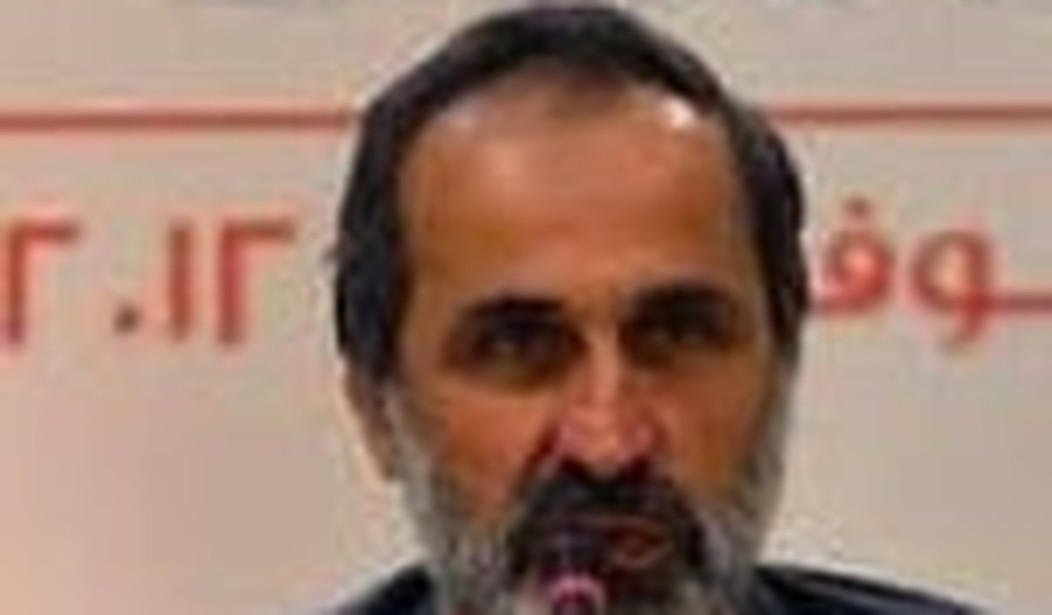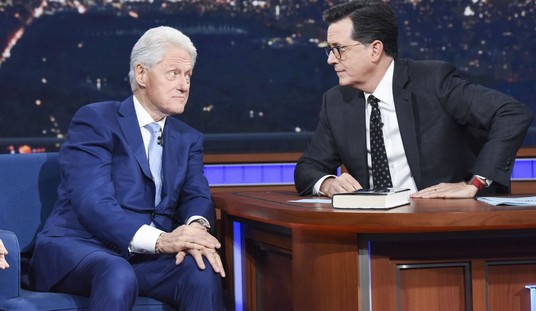A U.S.-supported move to create a single united framework for the Syrian revolution’s leadership has belatedly met with success. The new group, bearing the unwieldy name of the “National Coalition for Syrian Revolutionary and Opposition Forces,” will be headed by an Islamist cleric from Damascus, Sheikh Mouaz al-Khatib.
He will be backed by two deputies: businessman and veteran democratic oppositionist Riad Seif; and women’s rights activist Suhair al-Atassi.
The emergence of the National Coalition is an achievement for the Syrian external opposition. It came about as a result of massive pressure from the U.S. and Qatar on the Syrian oppositionists, after a gathering of the latter in Doha threatened to produce only another display of squabbling and disunity.
Many questions remain regarding the new coalition and its chances for really bringing about a unified movement capable of replacing the brutal Assad dictatorship.
In the first place, the forces that are actually carrying out the rebellion against the regime and who now hold power in considerable parts of the country were not involved in the Doha meetings. These are the disunited, fractious, but growingly effective armed rebel battalions.
The new coalition is expected to form a Revolutionary Military Council, which will bring together existing military councils inside the country. This framework could then be used for funneling arms to rebel battalions approved by the coalition and its backers.
With many powerful Islamist units operating outside of the framework of the local military councils however, it is not clear that the new coalition will succeed in uniting and overseeing the military effort against the dictatorship. This will be the most important task now facing it.
An additional question concerns the make up of the new coalition itself, and the extent to which it really differs from the Syrian National Council which it supersedes.
A list of 65 members of the new coalition has been released. Of these, 22 are members of the Muslim Brotherhood-dominated SNC. Another third consist of traditional and tribal representatives, some of whom are themselves Islamists and Muslim Brothers. Veteran Syrian oppositionist Ammar Abdul-Hamid described the list as consisting in essence of “ … the same tired and drab personalities that have plagued opposition work since the beginning of the revolution.”
Despite the fanfare that has announced its creation, it is, to say the least, doubtful if this body will prove up to the difficult task of creating a unified leadership for the rebellion which is now making significant advances inside Syria.
Meanwhile, inside Syria itself events are on the move. While many still speak of a stalemate, the reality on the ground is that the regime is slowly growing weaker. The failure of Assad’s forces to quickly retake the city of Aleppo in September was testimony to the declining strength of the government side.
A large swath of northern Syria has now been ceded to the rebellion. The rebels are in the process of mopping up isolated pockets of government resistance in this area. In the last two weeks, the regime abandoned an important stronghold in Saraqeb and narrowly fought off by aerial attacks a rebel attack on the strategic air base at Taftanaz.
The regime’s problem is that it simply can no longer muster a sufficient number of loyal men willing to fight on behalf of its cause. Its increasing reliance on air power and artillery in recent months has shown this.
The growing engagement of non-Syrian fighters — from the Islamist Lebanese Hezballah and Iraqi Sadrist movement — and the ceding of areas of the northeast to Kurdish control also testify to it.
Assad’s airmen and gunners can wreak a heavy toll among rebels and civilians. They can cause the rush of refugees across the Syrian-Turkish border that may shortly lead to a humanitarian crisis in that area.
But they cannot turn the tide in favor of the government, which is narrowing its lines of engagement in order to make more effective use of the ground troops available to it.
In the latest sign of the direction of events, the fighting is now approaching the capital city of Damascus. Street battles are taking place just outside the city limits. Even formerly well-guarded areas of residence of regime officials such as Mazzeh and Kafr Soussa are being subjected to mortar fire.
The center of the city remains under the guard of the loyalist Fourth Armored Division of Maher Assad. Residents are hoarding food supplies in anticipation of the crisis ahead. The area is filled with checkpoints and military positions.
But as all this takes place, the rebellion within Syria is still fractious, disunited, subject to internecine violence, and increasingly notable for the presence of extremist jihadi fighters. Islamist and secular rebel elements have already clashed inside the rebel-held zones of the north, at the Bab-al Salameh border crossing earlier this month.
It remains doubtful as to whether the National Coalition for Syrian Revolutionary and Opposition Forces can by itself alter this situation. What is needed is closer Western involvement and supervision of the rebellion within the country. This will enable the identification of powerful and deserving elements who can then receive the appropriate aid to finally bring the bloody reign of Bashar Assad to an end.









Join the conversation as a VIP Member